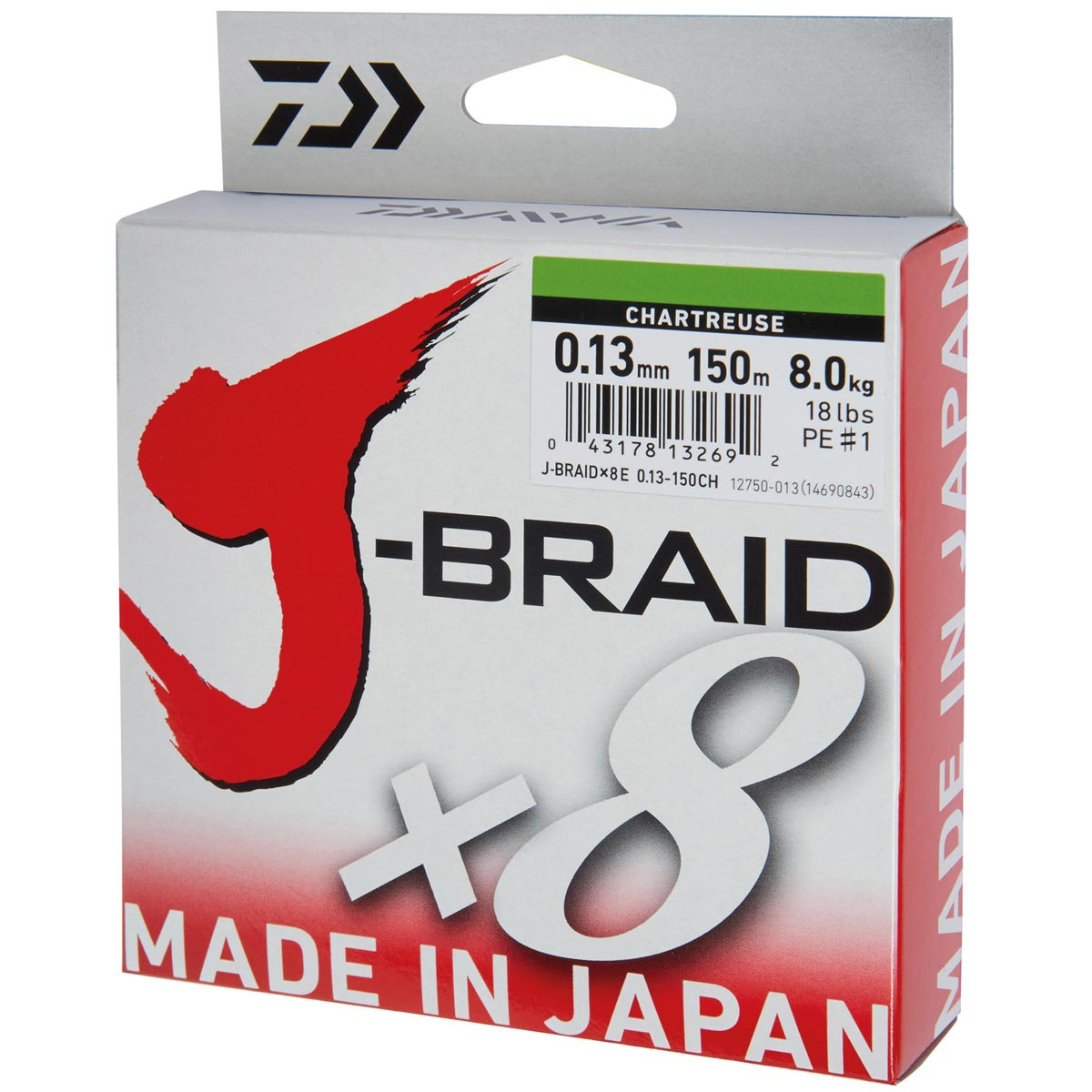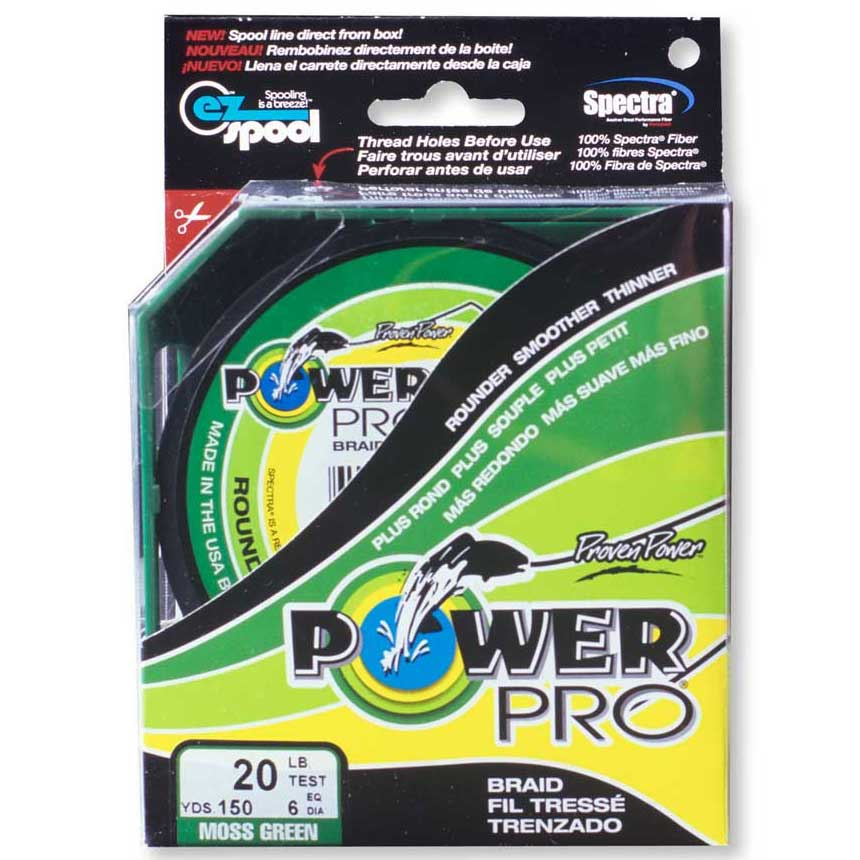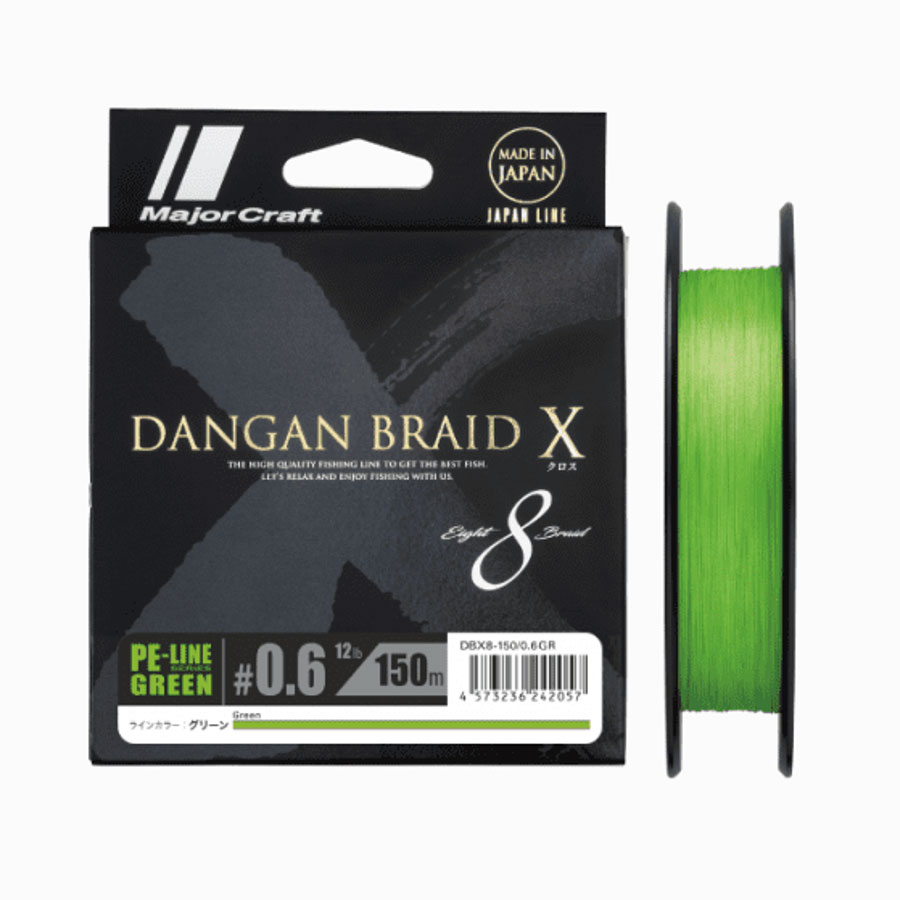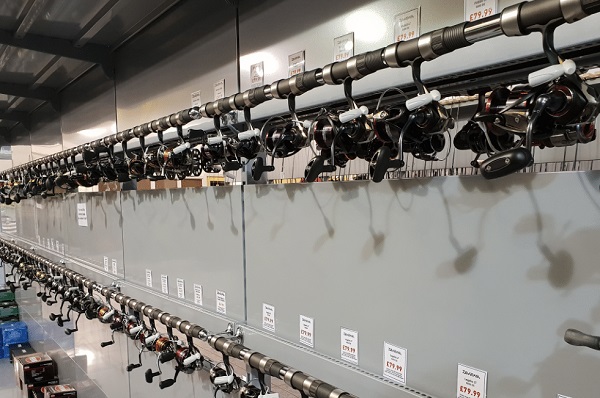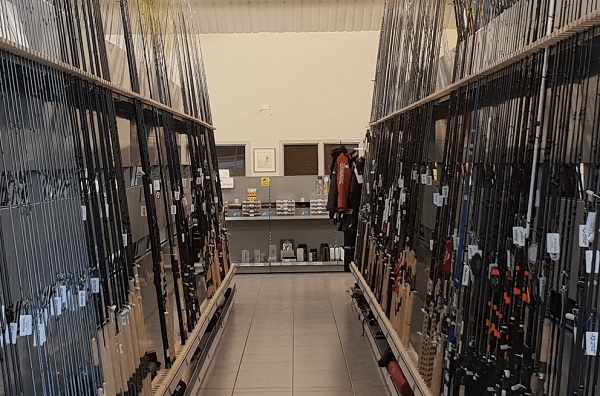Loved by many, braided fishing line is one of the most innovative tackle developments that the industry has seen in the last 25-30 years – the reason? Enjoy the sensitivity of every movement of the lure or playing the fish!
In this article, we will be breaking down our top 3 braids and how they compare to each other. These braids have been extensively used by our team and below we give you a true evaluation of their performance out on the water.

1. Daiwa J Braid
Our number one choice, constructed and engineered in Japan, this 8-strand construction braid provides you with a round and smooth performance line. Exceeding in lure, jigging, trolling and ledgering work. This near faultless braid behaves extremely well on the spool and provides efficient casting performance thanks to its silky finish.
The heavier and lighter breaking strains of this line have the same characteristics and there was nothing different in performance when used with heavy pike lure setups and finesse lure setups.
Daiwa’s J braid knots extremely well using either a palomar knot or double grinner.
Pro’s
- – Very limp and smooth braid
- – Great casting line
- – Great knot strength – based on palomar and double grinner knots
- – Value for money!
Cons
- -The line can go slightly flat in the heavier breaking strains after a lot of use whilst casting. Although we have not seen this hinder the line’s performance.
2. PowerPro Braid
An old favourite, PowerPro is a brand that has been at the top of the braided mainline game for a while, particularly sought after by pike anglers! Unlike the other braids in our list, PowerPro is of a 4 strand construction, meaning that the line is rough in hand and not as smooth as the other braids in our list. Don’t let its 4 strand development put you off though, this lower strand braid is as tough as old boots. Think of it like car tyres, your 4 strand braid is like the 4×4 mud tyre – rough, durable and reliable!
Great for lure and pike deadbait ledgering work. We found it to be slightly noisy whilst trolling due to its rougher texture and we found it to be not as enjoyable to use in the lighter breaking strains whilst using for finesse lure fishing tactics due to its lack of suppleness compared to its 8 strand counterparts.
Pro’s
- – Great for using through dense vegetation
- – Higher abrasion resistance than multistrand braids
- – Great knot strength
Cons
- – Rough in texture
- – Can be noisy when trolling or coming through the rod guides whilst casting
3. Major Craft Dangan X Braid
The Major Craft Dangan X Braid is a premium braided mainline ideal for the enthusiastic lure angler looking for a smooth and reliable braid option to spool on their reels.
Dangan X is the latest in the Major Craft braid series and utilises Japanese Micro-X manufacturing process with ultra high strength polyethylene fibres which creates and incredibly smooth finish. This also allows for the braid to be thinner and stronger per mm than any other braid on the market.
This silky smooth 8 strand braid with its reduced diameter allows for increased sensitivity and further casting distances to be achieved, perfect for when fishing smaller lighter lures.
The Major Craft Dagnan X Braid is available in a range of breaking strains for you to choose from in our drop down menu and comes in green finish with 150m of braid per spool.
Pro’s
- – Reduced diameter
- – Smooth finish
- – Great casting braid especially in lower breaking strains
Cons
- – A wee bit pricey compared to others on the market!
When & Why to Use Braid
Braid can be used in any fishing situation where sensitivity is an advantage. However, where it really comes into its own is when it is used whilst fishing with lures, fishing at distance or when targeting species with extremely hard mouths.
So what are the main advantages of fishing braid over monofilament & fluorocarbon mainlines?
Lower line diameter/higher breaking strain
Due to the way these dyneema lines are engineered and interwoven together. The diameter of braided lines are significantly lower than breaking strains of a monofilament equivalent. So for example: A 12lb monofilament will roughly have a diameter of 0.330mm a braided mainline of the same diameter will have a breaking strain of 60lbs!
A big difference right? The general rule of thumb is choose a braided mainline by diameter rather than breaking strain in most instances.
When it comes to the breaking strain quoted on the packaging that braided mainlines come in; most will give you a monofilament diameter equivalent. This can cause some confusion with anglers as they may think they have been mis-sold the incorrect breaking strain. So ensure you double check the packaging.
Increased Casting Distance
As we touched upon earlier in the article, braid is advantageous due to its higher breaking strain, lower diameter properties. This adds to the castability of the line. This coupled with a no memory line and a multi strand fiber construction or special coating provides you with a line that provides increased casting capabilities.

Increased Sensitivity
Unlike monofilament or fluorocarbon, braided mainlines have very little stretch. This provides increased bite indication and sensitivity. This allows you to impart more action in lures, feel how your lure is working through the water and increased sensitivity allowing you to feel for the subtlest of takes. The lack of stretch also means you can set a positive hook hold, even on the hardest of mouthed fish species.
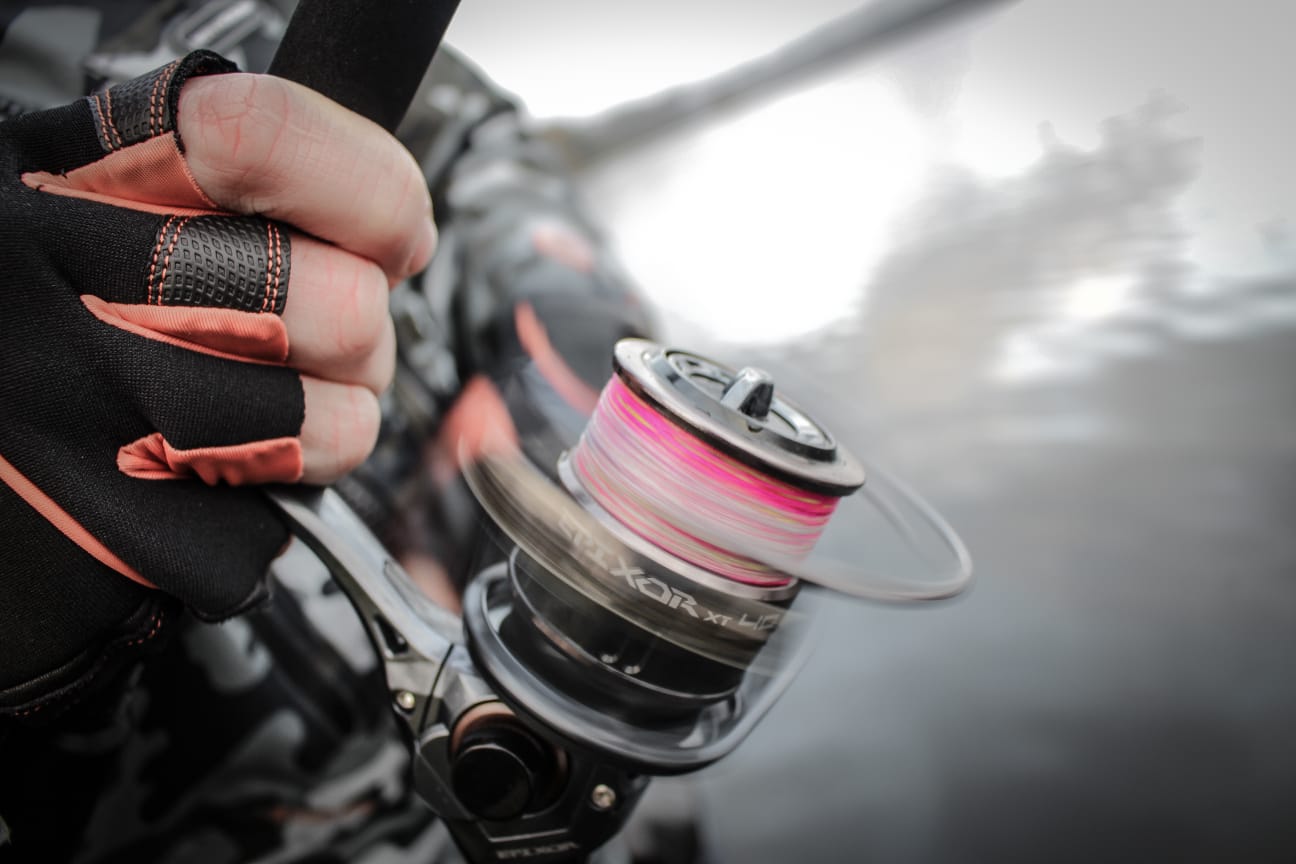
Tough & Durable
Unlike monofilament, braids do not suffer from UV deterioration over a season. This means it doesn’t need to be replaced as often. In actual fact braided mainlines can last for a good few seasons without needing replaced at all. You may find the coloured dye infused into the braid starts to fade throughout use, however, this does not affect the performance of the braid itself and is merely a cosmetic alteration.
We do recommend that you check for abrasion on the last couple of feet of line and cut it back where and when necessary and re-tie knots every so often. Apart from that you should have trouble free fishing.


